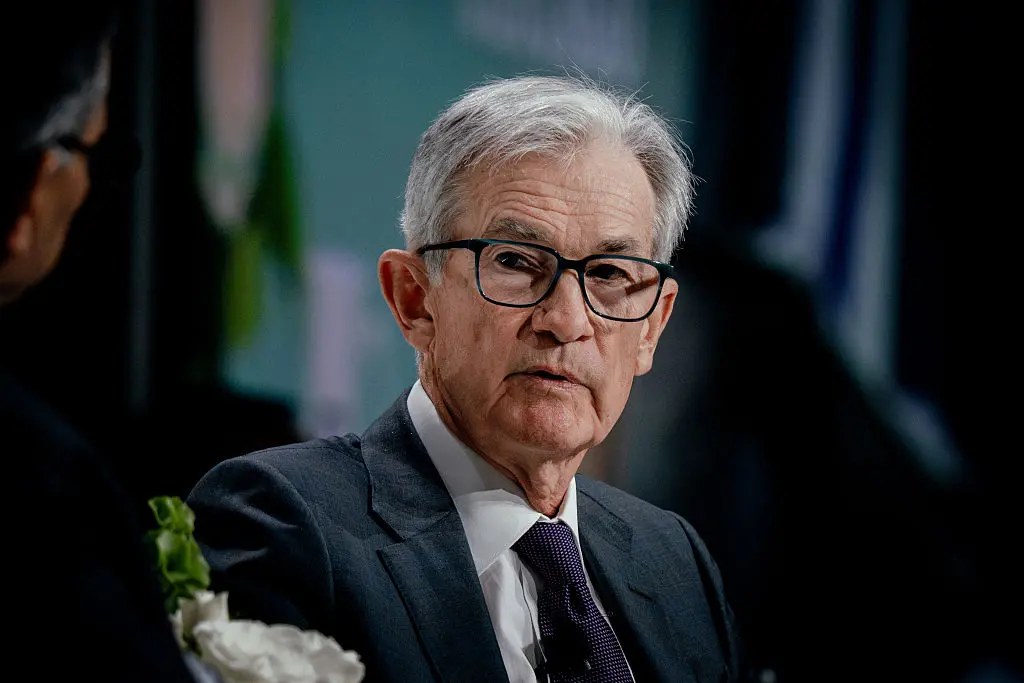Since the first week of his second White‑House bid, Donald Trump has pointed a steady finger at Federal Reserve chair Jerome Powell. If the U.S. economy feels wobbly, the former President insists, it’s because “Jay Powell”—or “Mr. Too Late,” as Trump now calls him—won’t slash interest rates on command. Yet Wall Street, global investors, and even many inside Trump‑world have reached a different conclusion: the biggest drag on growth is the tariff‑first trade policy Trump himself keeps threatening to expand.
Markets want consistency—Trump offers whiplash
Stocks have slid, Treasury yields have lurched, and the dollar has softened as investors try to price in Trump’s volley of tariff announcements, suspensions, and escalations. On Tuesday the International Monetary Fund lifted the probability of a U.S. recession to 37%; Gallup polling shows 42 percent of Americans already feel the economy is in recession. When markets see that kind of unease, they instinctively hunt for stability—and they’re not finding it in Trump’s daily blasts at the Fed.
A rare retreat on Powell
Over the weekend Trump mused—again—about firing Powell, even though it’s legally murky whether any President can dismiss a Fed chair mid‑term. Markets shuddered. By Monday night Trump back‑pedaled, saying he had “no intention” of ousting Powell. The episode underscored just how anxious traders are about political interference at the Fed: even a trial balloon can knock billions from equity values.
The Bessent effect can’t mask the tariff drag
Treasury Secretary Scott Bessent is now the White House’s preferred messenger to calm the Street. In a closed‑door talk at JPMorgan Chase—promptly leaked—Bessent predicted a “de‑escalation” of the China trade war. Stocks rallied on the headline, a pattern Bloomberg analysts call the Bessent Effect. But professionals say the sugar high lasts only until the next tweet. With U.S. levies effectively raising import costs 145 percent and Beijing retaliating at 125 percent, supply chains are already adjusting away from the United States.
Foreign capital hates guessing games
The United States still attracts roughly one‑tenth of all global foreign‑direct investment—about $5 trillion on the books—largely because Washington usually offers predictable ground rules. That advantage erodes when policy changes by social‑media post. Investors can live with higher rates if they know where those rates will be; they have a harder time with sudden tariff jolts that up‑end price structures overnight.
Growth projections keep sliding
The IMF now pegs 2025 U.S. growth at 1.8 percent, down from an earlier 2.7 percent estimate and well below the 2.8 percent logged in Joe Biden’s final year as President. Core inflation, meanwhile, has cooled to its lowest level since early 2021—another reason Powell is reluctant to torch his anti‑inflation credibility with a premature rate cut.
Blame only goes so far
Inside the West Wing the talking point is simple: if Powell would just relent, cheaper money would juice hiring and investment. Economists counter that rate relief can’t offset a trade regime that taxes inputs, spooks exporters, and sows uncertainty. Financial pros heard the same message Tuesday when Bessent, on the sidelines of IMF meetings, blasted the Fund for “mission creep” on climate and gender issues while offering no concrete plan to roll back tariffs.
Investors are voting with their feet
For now portfolios are tilting defensive—gold, utilities, short‑term Treasuries—while analysts warn clients to expect more policy gyrations as campaign season heats up. Trump may continue to rail at the Fed, but until the tariff threats end, markets are unlikely to buy the narrative that Powell is the problem.
Monetary policy can fine‑tune an economy; trade wars can redefine it. By blaming Jerome Powell for every downtick while turbo‑charging tariff risk, Donald Trump has created a story investors simply don’t believe—and the data show it.


